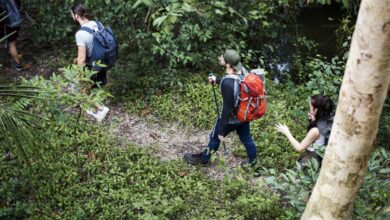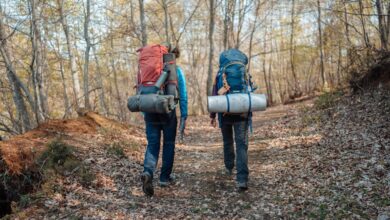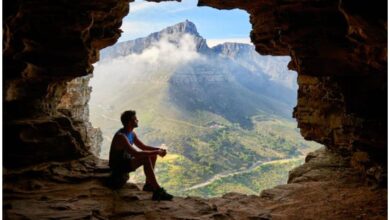How to Choose the Right Everest Base Camp Trekking Package

Choosing the right Everest Base Camp trekking package is a crucial step in ensuring a rewarding and memorable adventure in the Himalayas. With numerous options available, selecting the most suitable package requires careful consideration of several factors to align with your personal preferences, fitness level, and trekking goals.
First and foremost, assess the trekking package’s itinerary and duration. Packages can vary significantly, from standard routes to more customized experiences. A typical trek to Everest Base Camp spans around 12 to 16 days, including acclimatization days. However, some packages offer extended itineraries that explore additional areas or provide more acclimatization time. Evaluate your schedule and choose a package that fits within your time constraints while allowing ample time for acclimatization to minimize the risk of altitude sickness.
Consider the level of support provided by the trekking package. Different packages offer varying levels of support, ranging from basic arrangements to all-inclusive options. Basic packages might include only essential services like permits and accommodation, whereas more comprehensive packages offer additional features such as guided tours, porters, meals, and equipment rental. If you prefer a more comfortable experience with minimal logistics to manage, an all-inclusive package might be more suitable.
Examine the reputation and credentials of the trekking company offering the package. Everest Base Camp Trek Solo Travel Research their experience, customer reviews, and safety record to ensure that they provide high-quality services and prioritize the well-being of their clients. A reputable company will have experienced guides, adhere to safety standards, and be responsive to your needs and concerns.
Budget is another crucial consideration. Trekking packages come in a wide range of prices, influenced by factors such as the level of service, duration, and inclusivity. While it’s important to choose a package that fits your budget, be wary of overly cheap options, as they may compromise on safety or quality. Balance cost with the value of services provided to ensure a worthwhile investment in your trekking experience.
Finally, assess any additional services or features included in the package, such as travel insurance, pre-trek briefings, and post-trek activities. Some packages offer extra perks like cultural tours or additional excursions, which can enhance your overall experience and provide a deeper understanding of the region.
By carefully evaluating these aspects—itinerary, support level, company reputation, budget, and additional features—you can select an Everest Base Camp trekking package that aligns with your needs and expectations, ensuring a fulfilling and unforgettable adventure in one of the world’s most iconic trekking destinations.
Introduction
Choosing the right Everest Base Camp trekking package is pivotal in shaping your Himalayan adventure. This trek, renowned for its breathtaking vistas and challenging terrains, attracts trekkers from around the globe. The myriad of trekking packages available can make the selection process daunting. The key to choosing the ideal package lies in understanding your own needs and preferences, and how these align with what different packages offer. A well-chosen package not only ensures a smooth and enjoyable trek but also enhances safety and comfort. By focusing on factors such as itinerary, support level, budget, and group size, you can navigate through the options more effectively. This preparation is crucial for making informed decisions, setting realistic expectations, and ensuring that your trek to Everest Base Camp is as memorable and rewarding as possible.
Understanding Trekking Packages
Trekking packages to Everest Base Camp vary widely, offering different levels of service and inclusivity. Basic packages typically include the essentials—accommodation, permits, and a basic itinerary—while more comprehensive packages offer additional features such as guided tours, meals, and porter services. Understanding these differences is key to selecting a package that suits your preferences. Basic packages might appeal to seasoned trekkers who are comfortable managing logistics independently, whereas those seeking a more hassle-free experience might opt for all-inclusive packages that cover a wide range of services. Additionally, some packages include extra services like equipment rental, travel insurance, and cultural experiences. Familiarize yourself with what each package includes to ensure it aligns with your needs and expectations, thereby enhancing your trekking experience and ensuring you are well-prepared for the journey.
Determining Your Budget
Budget is a significant factor when choosing an Mount Everest Base Camp trekking package, as it influences the level of comfort and support you will receive. Trekking packages can range from economical to luxury, depending on the services provided. When setting your budget, consider not only the cost of the package itself but also additional expenses such as tips for guides and porters, travel insurance, and any extra activities or gear. While it’s tempting to opt for the cheapest option, it’s important to balance cost with quality and safety. Packages that appear inexpensive might skimp on essential services or safety measures, which can affect your overall trekking experience. Conversely, higher-priced packages often include better support and amenities. Evaluate what’s included in the price and ensure it matches the level of service and comfort you seek. Making a well-informed budget decision helps ensure a safe, enjoyable, and memorable trek.
Duration and Itinerary Options
The duration and itinerary of an Everest Base Camp trek are crucial in determining the overall experience. Standard treks typically last between 12 and 16 days, including acclimatization days to adjust to the high altitude. Some packages offer shorter itineraries, which may appeal to those with limited time but can increase the risk of altitude sickness due to insufficient acclimatization. Conversely, longer itineraries provide a more gradual ascent, allowing more time for acclimatization and exploration. Packages might also vary in terms of additional side trips or detours, such as visits to nearby viewpoints or monasteries. When selecting an itinerary, consider your fitness level, time constraints, and how much time you want to spend acclimatizing and exploring. Opting for an itinerary that suits your needs helps ensure a safer and more enjoyable trek, allowing you to fully appreciate the stunning landscapes and cultural experiences along the way.
Group Size Considerations
Group size is an important factor when choosing an Everest Base Camp trekking package, as it impacts the overall experience and dynamics of the trek. Trekking groups can range from small, intimate groups to larger, more social ones. Smaller groups often offer a more personalized experience, with more individual attention from guides and a greater degree of flexibility in the itinerary. On the other hand, larger groups might benefit from a more social atmosphere and potentially lower costs per person. However, they can also lead to logistical challenges and a less personalized experience. Consider your preferences for group dynamics, the level of attention you desire from guides, and your comfort with navigating group interactions. Additionally, smaller groups may provide more opportunities for connecting with the local culture and adapting the trek to your needs. Balancing these considerations will help you choose a package that aligns with your expectations and enhances your trekking adventure
Guided vs. Self-Guided Treks
When deciding between a guided and self-guided trek to Everest Base Camp, it’s essential to weigh the benefits and challenges of each option. Guided treks come with the advantage of expert support and local knowledge. Guides, often Sherpas with extensive experience in the region, provide valuable insights into the terrain, culture, and safety protocols. They manage logistics, navigate the route, and offer assistance in case of emergencies, which can be particularly reassuring in the unpredictable conditions of the Himalayas. Additionally, guided treks typically include support staff, such as porters and cooks, which can significantly enhance comfort and convenience.
On the other hand, self-guided treks offer greater independence and flexibility. With a self-guided trek, you control your pace and schedule, and can make spontaneous decisions about the journey. However, this requires a high level of preparation, including navigating the route, managing permits, and dealing with unforeseen issues. Self-guided trekkers must have strong navigation skills, be well-versed in altitude sickness management, and be prepared for varying weather conditions. They also need to arrange their own accommodation and meals, which can be challenging in remote areas.
Ultimately, the choice between guided and self-guided treks depends on your experience level, comfort with self-navigation, and preference for support versus independence. Guided treks are ideal for those seeking a structured, safer experience, while self-guided treks suit more experienced trekkers who prefer autonomy.
Reviewing Company Reputation
Selecting a reputable trekking company is crucial for a successful and safe Everest Base Camp adventure. A company’s reputation reflects its reliability, quality of service, and adherence to safety standards. Start by researching customer reviews and testimonials to gauge the experiences of previous trekkers. Look for feedback on the company’s professionalism, the competence of guides, and overall satisfaction with the trek. Checking for certifications and affiliations with recognized trekking and tourism organizations can also provide assurance of the company’s credibility.
Additionally, inquire about the company’s experience in organizing Everest Base Camp treks. Established companies with a long history of successful treks are more likely to provide well-organized and safe experiences. Evaluate their response time to queries, the clarity of their communication, and their willingness to provide detailed information about the trek. A reputable company should be transparent about their services, costs, and safety measures. By choosing a well-regarded company, you enhance the likelihood of a well-supported, enjoyable, and safe trek.
Inclusions and Exclusions of Packages
Understanding the inclusions and exclusions of an Everest Base Camp trekking package is essential for making an informed decision and avoiding unexpected costs. Packages typically vary in what they offer, so it’s important to carefully review the details provided by each company. Common inclusions include accommodation, meals, permits, and transportation within Nepal. Some packages also cover the cost of a guide, porter, and necessary trekking equipment.
However, there are often exclusions that trekkers need to budget for separately. These can include international airfare, travel insurance, visa fees, personal gear, and tips for guides and porters. Additional expenses may also arise for optional activities, such as cultural tours or extra excursions. Clarify what is included in the package and what additional costs you may incur to avoid surprises. This understanding helps ensure that you are fully prepared financially and can plan your budget accordingly.
Safety Measures and Support
Safety measures and support are paramount when choosing an Everest Base Camp trekking package. The rugged terrain and high altitude of the trek pose potential risks, so a comprehensive safety plan is essential. A reputable trekking company should provide detailed information on their safety protocols, including emergency evacuation procedures, first aid training for guides, and the availability of medical support.
Support during the trek typically includes guides who are trained to handle altitude sickness, provide emergency assistance, and ensure proper acclimatization. Packages that include adequate medical support, such as oxygen supplies and communication equipment, enhance safety. Additionally, a well-organized company will have contingency plans for adverse weather conditions or other unexpected challenges. Assessing the safety measures and support provided by different packages helps ensure a secure and well-managed trekking experience.
Acclimatization Plans
Effective acclimatization is crucial for a safe and successful trek to Everest Base Camp. The high altitude of the trek increases the risk of altitude sickness, so a well-structured acclimatization plan is essential. Many trekking packages include acclimatization days in their itinerary to allow trekkers time to adjust to the decreasing oxygen levels.
A good acclimatization plan typically involves gradual ascent with scheduled rest days at strategic points along the trek. This approach helps the body acclimate to higher altitudes and reduces the risk of altitude sickness. Look for packages that offer acclimatization days and ensure that the itinerary includes these crucial rest periods. Some packages may also include additional acclimatization hikes to higher altitudes before returning to lower elevations for recovery. By choosing a package with a thoughtful acclimatization plan, you enhance your chances of a comfortable and successful trek.
Level of Difficulty and Experience
When selecting an Everest Base Camp Trek Group Tours, understanding the level of difficulty and required experience is crucial to ensure a safe and enjoyable adventure. The trek to Everest Base Camp is renowned for its challenging conditions, including high altitudes, rugged terrain, and unpredictable weather. Different trekking packages may cater to varying levels of experience and fitness. Some packages are designed for seasoned trekkers who are accustomed to high-altitude environments and physically demanding hikes, while others may be geared towards less experienced trekkers with more gradual itineraries and additional support.
Assess the trek’s difficulty by reviewing the daily distance covered, elevation gain, and the overall itinerary. Packages that include acclimatization days and slower ascent rates are often better suited for those who are less experienced or concerned about altitude sickness. Conversely, more challenging packages might offer a faster pace and less acclimatization time, which is suited for experienced trekkers. Be honest about your fitness level and previous trekking experience when choosing a package to ensure you select one that aligns with your capabilities. Proper preparation, including physical training and acclimatization strategies, will also enhance your ability to tackle the trek’s challenges successfully.
Cultural and Environmental Considerations
Cultural and environmental considerations are essential when choosing an Everest Base Camp trekking package, as they ensure respectful and sustainable travel practices. The Everest region is rich in cultural heritage, primarily influenced by the Sherpa people and Tibetan Buddhism. Trekkers should be mindful of local customs, traditions, and etiquette to foster positive interactions with the community. Packages that offer insights into the local culture, including visits to monasteries and traditional villages, provide a more immersive experience.
Environmental considerations are equally important. The Everest region is a sensitive ecological area, and responsible trekking practices help preserve its natural beauty. Look for packages that emphasize environmental responsibility, such as waste management, minimal-impact camping, and support for eco-friendly lodges. Sustainable tourism practices, like reducing plastic use and supporting conservation initiatives, are crucial for minimizing the impact on the region’s environment. By selecting a package that incorporates cultural sensitivity and environmental stewardship, trekkers contribute to preserving the region’s heritage and natural resources.
Feedback and Recommendations
Feedback and recommendations play a vital role in selecting the right Everest Base Camp trekking package. Reviewing testimonials from previous trekkers provides valuable insights into the quality and reliability of the trekking company and its packages. Look for reviews on travel forums, social media, and the company’s website to gauge the experiences of others. Pay attention to comments about the quality of guides, the accuracy of the itinerary, and the level of support provided.
Seek recommendations from friends, family, or fellow trekkers who have firsthand experience with Everest Base Camp treks. Personal recommendations can offer trustworthy and detailed information that may not be available online. Additionally, consider reaching out to trekking companies for references from past clients. Engaging with past trekkers or guides directly can provide a clearer picture of what to expect. Gathering and evaluating feedback helps make an informed decision, ensuring a trekking package that meets your expectations and offers a rewarding experience.
Flexibility and Customization Options
Flexibility and customization options are important factors when choosing an Everest Base Camp trekking package, especially for those who seek a personalized adventure. Standard packages often follow a set itinerary, but many trekking companies offer the option to tailor the trek to individual preferences. Customizable packages may include modifications to the itinerary, additional acclimatization days, or alternative routes to accommodate specific interests or fitness levels.
Consider what level of flexibility you require, such as adjusting the trek’s duration, adding side trips, or altering accommodation preferences. Some packages offer the option to create a bespoke experience based on your personal interests, such as cultural exploration, wildlife observation, or additional trekking challenges. Ensure that the trekking company is open to discussing and accommodating your preferences. Customization options allow for a more personalized and enjoyable trek, catering to unique needs and enhancing your overall experience.
Conclusion and Final Thoughts
Choosing the right Everest Base Camp trekking package involves careful consideration of various factors to ensure a safe, enjoyable, and memorable adventure. Assess the level of difficulty and required experience to match your fitness level and trekking capabilities. Cultural and environmental considerations ensure respectful interactions and sustainable practices, while feedback and recommendations provide valuable insights into the quality of different packages. Flexibility and customization options allow for a personalized experience tailored to your preferences.
By thoroughly evaluating these aspects, you can select a trekking package that aligns with your goals and expectations. Whether you seek a challenging adventure, a culturally immersive experience, or a sustainable journey, the right package will enhance your trek to Everest Base Camp, making it a once-in-a-lifetime experience. Approach your decision with careful planning and open communication with trekking companies to ensure that you embark on an adventure that meets your needs and exceeds your expectations.



